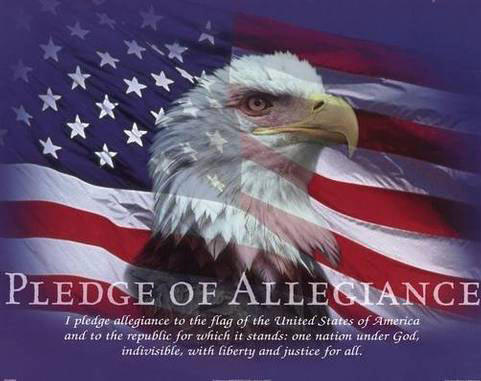Tearing Our Country Apart Over A Power Struggle
The Pledge of Allegiance was written in 1892 by Francis Bellamy (1855-1931), a Baptist minister, a Christian Socialist, and the cousin of Socialist Utopian novelist Edward Bellamy (1850-1898). Bellamy's original "Pledge of Allegiance" was published in the September 8th issue of the popular children's magazine The Youth's Companion as part of the National Public-School Celebration of Columbus Day, a celebration of the 400th anniversary of Christopher Columbus's discovery of America, conceived by James B. Upham.

Bellamy's original Pledge read, "I pledge allegiance to my Flag and the
Republic for which it stands, one nation, indivisible, with liberty and
justice for all. America"
The pledge was supposed to be quick and to the point. Bellamy designed
it to be stated in 15 seconds. He had initially also considered using
the words equality and fraternity but decided they were too
controversial since many people opposed equal rights for women and
blacks. Bellamy said that the purpose of the pledge was to teach
obedience to the state as a virtue and that the United States supports
the flag.
After a proclamation by President Benjamin Harrison, the Pledge was
first used in public schools on October 12, 1892 during Columbus Day
observances. This date was also significant as it was the dedication day
of the World's Columbian Exposition in Chicago, Illinois. Bellamy
thought that the pledge itself and the involvement of children across
the country would be a fine show of national solidarity.
In 1923 the National Flag Conference called for the words my Flag to be
changed to the Flag of the United States. The reason given was to ensure
that immigrants knew to which flag reference was being made. The words
"of America" were added a year later. The U.S. Congress officially
recognized the Pledge as the official national pledge on June 22, 1942.